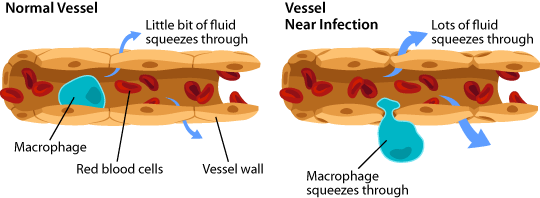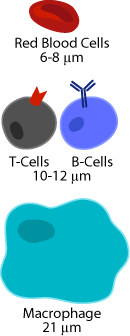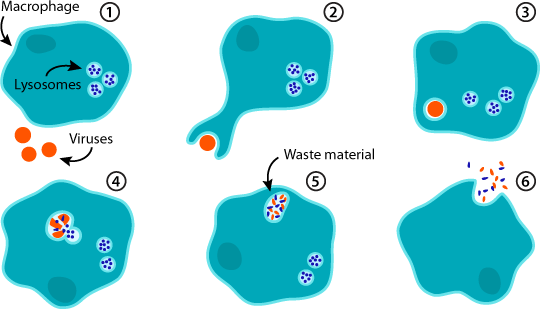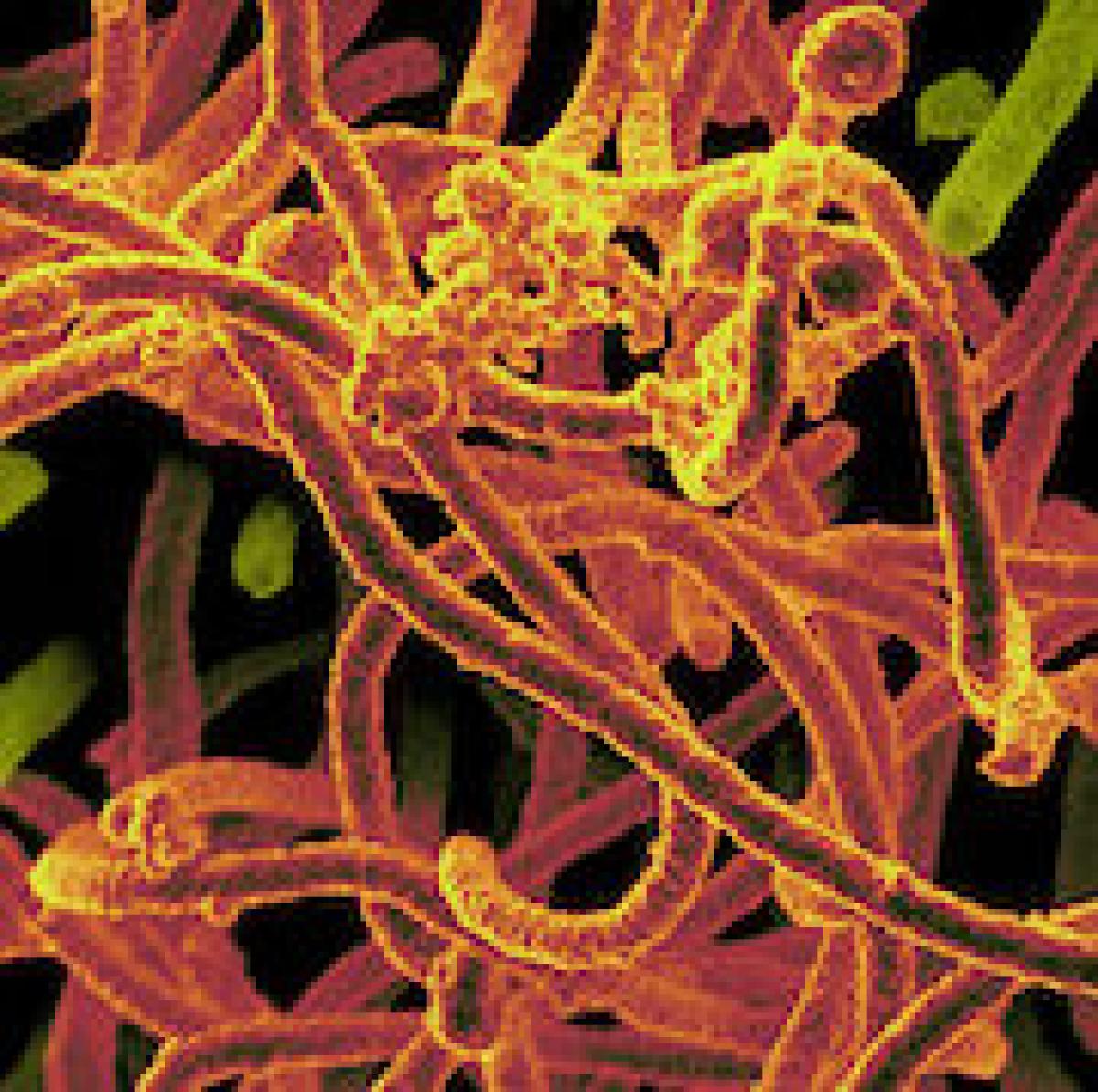Macrophages

Early to the scene
Macrophages, a kind of white blood cell, are one of the first types of cells at the infection (along with neutrophils). They get to the infection from your blood. Your blood looks like it is just a red fluid, but it has lots of other kinds of cells, too. There are red blood cells that bring oxygen to every part of your body and white blood cells that fight infections.
Getting to the scene
Infected or damaged cells, like the epithelial cells in our story, call for help by releasing chemicals that attract macrophages already in nearby blood vessels. These chemicals also open spaces between blood vessel cells. Macrophages can squeeze between the spaces to get to the action!

When cells call for help

Have you ever had a splinter that after a day or two felt painful, hot, and swollen? Your cells around the splinter were calling for help, and when the blood vessels let macrophages in the infected tissue, they also let some blood fluid seep into the area. This extra fluid and the chemicals released by infected cells can cause inflammation. This hurts, but actually helps your body fight infections better!
Bringing in more help
Macrophages and neutrophils work to keep the body clean of debris and invaders, but they also call for backup when an infection is too big for the two of them to handle alone. Other immune system cells, like the T-Cells and B-Cells in our story, are alerted that their help is needed by chemicals the macrophages release. Macrophages are also linked to the presence of other types of cells like basophils and eosinophils, which are most often involved in allergic reactions. These cells also help control the inflammation of tissues.
Big eaters
Think of macrophages as cell-eating machines. Their name actually means “big eater” in Greek. Macrophages are the biggest type of white blood cells - about 21 micrometers - or 0.00083 inches. Still too small to see with your eyes, but big enough to do the important job of cleaning up unwanted viruses, bacteria, and parts of dead cells.
Macrophages don’t eat cells the same way you might eat your food. Instead, the eating machines engulf viruses and bacteria. This is called phagocytosis. First, the macrophage surrounds the unwanted particle and sucks it in. Then, the macrophage breaks it down by mixing it with enzymes stored in special sacs called lysosomes. The leftover material is then pushed out of the cell as waste.

Macrophages in action
References:
Video from Judith Behnsen on Wikimedia Commons.
Bibliographic details:
- Article: Macrophages
- Author(s): Dr. Biology
- Publisher: Arizona State University School of Life Sciences Ask A Biologist
- Site name: ASU - Ask A Biologist
- Date published:
- Date accessed:
- Link: https://askabiologist.asu.edu/macrophage
APA Style
Dr. Biology. (). Macrophages. ASU - Ask A Biologist. Retrieved from https://askabiologist.asu.edu/macrophage
Chicago Manual of Style
Dr. Biology. "Macrophages". ASU - Ask A Biologist. . https://askabiologist.asu.edu/macrophage
Dr. Biology. "Macrophages". ASU - Ask A Biologist. . ASU - Ask A Biologist, Web. https://askabiologist.asu.edu/macrophage
MLA 2017 Style
Be Part of
Ask A Biologist
By volunteering, or simply sending us feedback on the site. Scientists, teachers, writers, illustrators, and translators are all important to the program. If you are interested in helping with the website we have a Volunteers page to get the process started.


